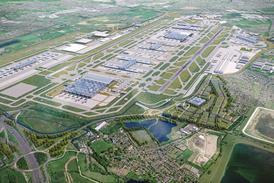- Home
 John McAslan & Partners unveils rival Liverpool Street station redevelopment vision
John McAslan & Partners unveils rival Liverpool Street station redevelopment vision Third of investors report reduced appetite for investing in high-rise developments due to the Building Safety Act
Third of investors report reduced appetite for investing in high-rise developments due to the Building Safety Act Government picks Heathrow’s £49bn third runway plan over cheaper rival option
Government picks Heathrow’s £49bn third runway plan over cheaper rival option Rogers’ Inmos Microprocessing Factory granted grade II*-listed status
Rogers’ Inmos Microprocessing Factory granted grade II*-listed status
- Intelligence for Architects
- Subscribe
- Jobs
- Events

2025 events calendar Explore now 
Keep up to date
Find out more
- Programmes
- CPD
- More from navigation items
‘There’s still work to be done to make space for the needs of women’

Barbara McFarlane and Jane Darke were contributors to a ground-breaking analysis of the way architecture and design were marginalising women in 1984. Here they look back at the book, its context and its legacy
Making Space, Women and the Man-Made Environment was first published in 1984. It has just been reissued with a new introduction examining its context and legacy.
The setting in which the ideas in the book evolved was second-wave feminism of the late 1970s and 1980s, a time when women were wanting to take control of all aspects of their lives. The book analysed the way design embodies current assumptions about the relative places of men and women, the marginalisation of women in architecture as well as the unequal power between designers and building users. Now, 38 years later, have things changed?
This content is available to registered users | Already registered?Login here
You are not currently logged in.
To continue reading this story, sign up for free guest access
Existing Subscriber? LOGIN
REGISTER for free access on selected stories and sign up for email alerts. You get:
- Up to the minute architecture news from around the UK
- Breaking, daily and weekly e-newsletters
Subscribe to Building Design and you will benefit from:

- Unlimited news
- Reviews of the latest buildings from all corners of the world
- Technical studies
- Full access to all our online archives
- PLUS you will receive a digital copy of WA100 worth over £45
Subscribe now for unlimited access.


